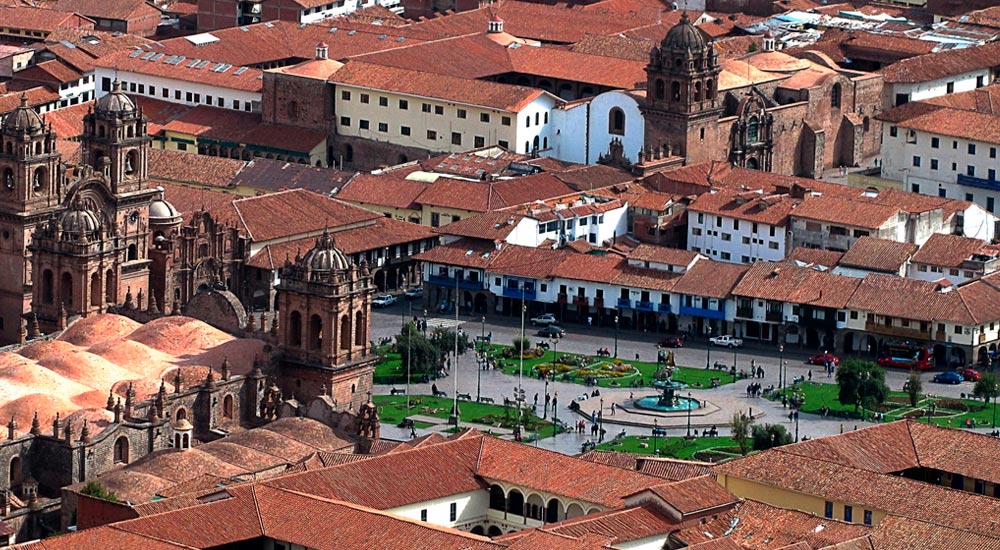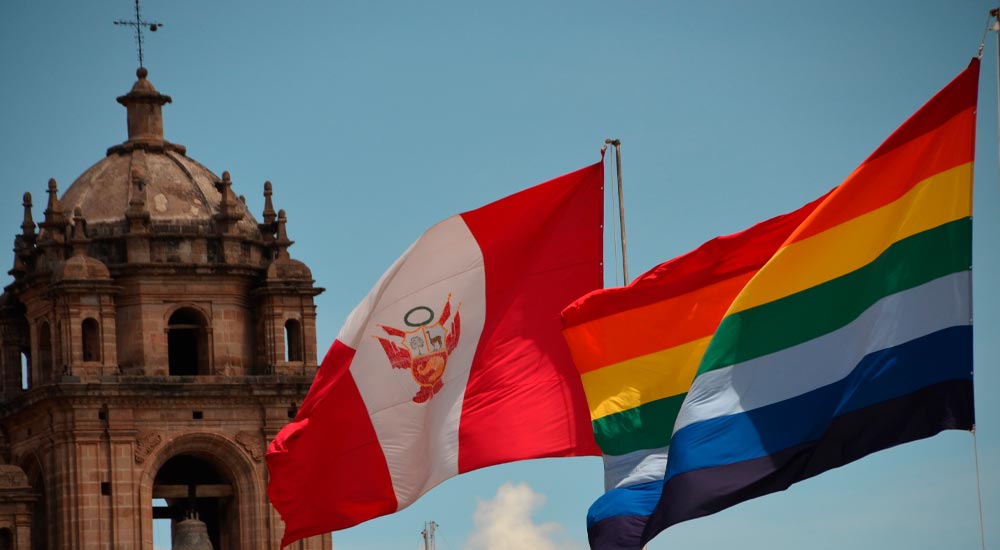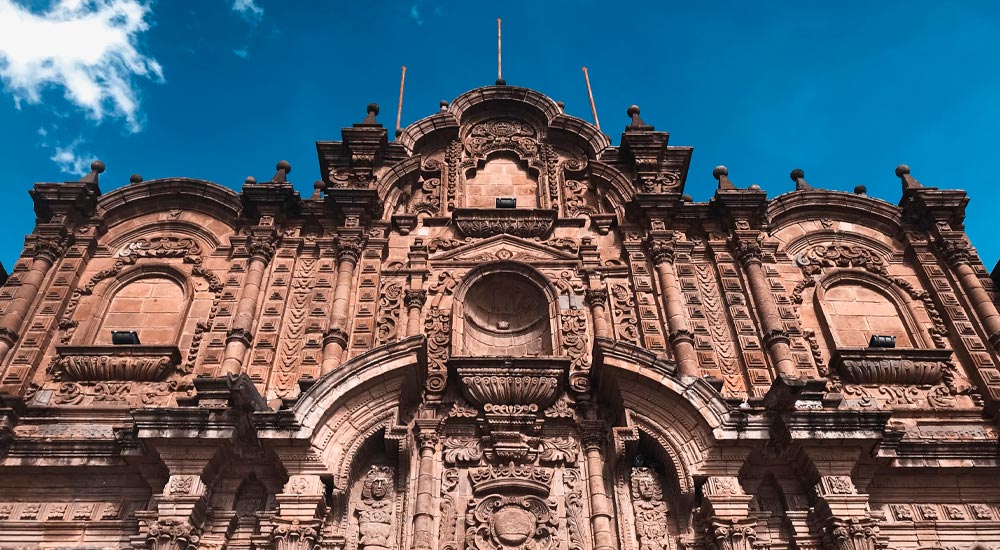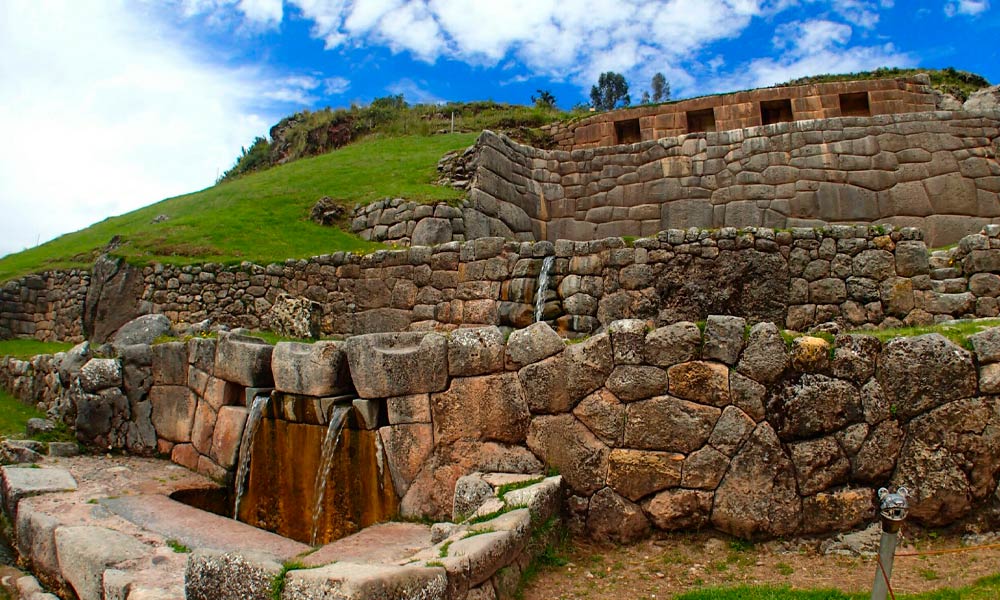In the heart of Cusco, an architectural and spiritual gem majestically stands over the city’s main square. The Cathedral of Cusco, also known as the Cathedral Basilica of the Virgin of the Assumption, is a monument that not only impresses with its magnificent architecture but also carries profound historical and spiritual significance. In this virtual journey, we will delve into the secrets of this iconic site, marveling at its architectural beauty and uncovering the stories that make it a beacon of Cusco’s history and spirituality.
A Glimpse of History
A Tale of Two Centuries
The history of the Cusco Cathedral is as rich and multifaceted as the city itself. It began in the 16th century, a time when Cusco was undergoing profound transformations in the wake of the Spanish conquest. As Spanish colonialists established their presence in the Inca capital, they aimed to cement their authority not only through political and military means but also through the built environment.

The cathedral, as we see it today, was constructed on a foundation that carries the echoes of a pre-Columbian past. It was built upon the very site where the palace of the Inca Viceroy Alfonso Mesía had once stood. This historical layering creates a unique duality within the cathedral’s walls. As you step inside, you’re immediately struck by the feeling of transcending centuries.
The construction of the cathedral was no small feat; it spanned nearly a century, from 1560 to 1654. This extensive period of building, renovating, and expanding explains the cathedral’s eclectic architectural style. It’s a living museum of architectural trends from the Renaissance and Gothic styles of the Spanish to the incorporation of indigenous influences.
One of the most remarkable aspects of the Cusco Cathedral is how it bridges these two distinct eras: the pre-Columbian and the colonial. The foundations of the cathedral were laid upon the Inca stones, which were expertly crafted without mortar, a testament to the incredible precision of Inca masonry. This indigenous influence is most visible in the lower levels of the cathedral, especially in the Chapel of Triumph and the famous Stone of Twelve Angles.
The Chapel of Triumph is one of the earliest parts of the cathedral and is significant for its fusion of native and Spanish motifs. Here, you can see depictions of angels dressed in Inca attire, complete with feathers and sandals, an intentional blend of two worlds.
The renowned Stone of Twelve Angles, located within the cathedral’s exterior wall, is a true testament to Inca stonework. This stone, along with others like it throughout the city, is a living example of how the Inca’s precise stone-cutting techniques allowed stones to fit together perfectly. It remains a symbol of the city’s impressive architectural heritage.
Overall, the Cusco Cathedral is a living embodiment of the city’s history, where layers of time, culture, and spirituality have converged. It is a place where visitors can not only marvel at the grandeur of its architecture but also feel the palpable connection between two distinct eras that, despite the ravages of time and conquest, continue to coexist within its sacred walls.
The Fusion of Styles
The Cusco Cathedral’s architecture is a harmonious blend of various styles, predominantly influenced by the Renaissance, which is notably expressed in its façade. As you approach the cathedral, you’ll be greeted by an intricate masterpiece of Plateresque design. The façade is resplendent with lavish ornamentation, with intricate details meticulously carved into the stone. This Plateresque style reflects the Spanish Renaissance’s affinity for ornate and detailed designs, and it’s a dazzling introduction to the cathedral’s interior.

Once inside, the architectural journey continues, offering an extraordinary fusion of styles that showcases the evolving tastes and influences across centuries. The cathedral features impressive Doric and Ionic columns, highlighting the classical architectural elements that were prominent during the Renaissance period. These columns lend a sense of grandeur to the interior, emphasizing the cathedral’s significance.
But the architectural story doesn’t end with the Renaissance influences. The cathedral, through the hands of skilled builders and architects across generations, has embraced Baroque and Gothic elements, adding even more layers to its architectural tapestry. As you explore deeper into the cathedral, the transition from Renaissance to Baroque and Gothic is evident. The ornate altars, intricate wooden carvings, and elaborate gold leaf embellishments are characteristic of the Baroque period, a style known for its opulence and exuberance. It’s in these details that the soul of the cathedral’s artistry truly shines.
The Gothic influence can be seen in the towering arches, ribbed vaults, and the verticality of the interior space. Gothic architecture is celebrated for its ability to create soaring, light-filled spaces, and the cathedral ingeniously utilizes these elements to evoke a sense of transcendence.
In essence, the Cusco Cathedral is not merely a structure but a living catalog of architectural evolution. It’s a testament to the ability of each generation to build upon the work of its predecessors while incorporating the artistic trends and aesthetics of their time. As a result, the cathedral stands as a testament to the evolving artistic tastes and cultural fusion that have occurred over the centuries. It is a place where history, art, and architecture beautifully converge, creating an immersive experience that not only delights the eyes but also provides a unique window into the city’s vibrant and complex past.
Art and Treasures Inside
The Silver Altar
The silver altar within the Cusco Cathedral is nothing short of a breathtaking work of art, encapsulating the finest craftsmanship of the colonial period. It is, in many ways, a symphony of silver – thousands of meticulously crafted pieces coming together to create an awe-inspiring whole.
At the heart of this silver masterpiece is a remarkable portrayal of the Virgin of the Immaculate Conception, a central figure in the Catholic faith. She stands as the focal point of the altar, her serene presence radiating an aura of divinity. She is surrounded by a heavenly host of angels, virgins, and saints, each one a small marvel in itself, all meticulously crafted from silver. The collective beauty and artistry of this ensemble leave visitors in a state of wonder.
The silver altar not only showcases the extraordinary talent of colonial silversmiths but also stands as a testament to the profound religiosity that characterized the era. During the colonial period, the fusion of Spanish Catholicism and indigenous beliefs resulted in a rich tapestry of religious art and expression. The Cusco Cathedral, with its silver altar, is a manifestation of this cultural amalgamation, a living legacy of a time when art was a conduit to the divine.
As you stand before this altar, you can’t help but feel a sense of reverence and admiration for the skilled hands that shaped it, and the faith that inspired it. It is a reminder that in the heart of Cusco, not only do history and art converge, but spirituality also finds a profound and resplendent home. The silver altar is a masterpiece that transcends time, inviting all who behold it to partake in the sacred and artistic heritage of Cusco.
Paintings and Frescoes
Within the Cusco Cathedral, the walls themselves become canvases for a vivid and extensive collection of colonial paintings. Stepping into this sacred space, visitors are not only surrounded by towering stone arches and vaulted ceilings but are also greeted by a visual narrative of an era where two worlds collided – the indigenous and the Spanish. It’s a living tapestry that weaves together the history, spirituality, and cultural amalgamation of colonial Cusco.
Among the most noteworthy works of art, the paintings by Diego Quispe Tito take center stage. Tito, an indigenous painter, is celebrated as one of the most influential artists of his time in Cusco. His art goes beyond just aesthetic admiration; it’s a portal into the complex dynamics of the era. Tito’s creations encompass a wide range of subjects, both sacred and secular, reflecting the diverse interests and influences of the period.
These paintings are far more than decorative elements; they are historical documents that attest to the fusion and interplay of two distinct cultural worlds. Within the cathedral’s walls, Tito’s work tells stories of the Andean landscape, daily life, and the religious syncretism that characterized the colonial period. The sacred and the earthly converge, much like the broader cultural landscape in Cusco, where Spanish Catholicism and indigenous beliefs merged into a unique and intricate tapestry.
As you walk through the cathedral and observe these paintings, you can’t help but feel the layers of history come alive. The art isn’t just something to admire; it’s a means of understanding the complex history of Cusco and the resilience of indigenous cultures in the face of colonial influence. These paintings are visual archives that beckon you to explore the past and recognize the rich cultural heritage of Cusco.
In every stroke and color, in every scene depicted, you can find the echoes of a vibrant history and the endurance of a people who held fast to their traditions, even as new ones were imposed upon them. The cathedral’s art, through artists like Diego Quispe Tito, provides a unique lens through which to appreciate the profound history of Cusco, where, within the walls of this sacred edifice, history and art intertwine in a powerful and evocative narrative.
The Last Supper
At the heart of the Cusco Cathedral, an iconic fresco takes center stage: the depiction of the Last Supper, a piece of art created by the skilled hand of Marcos Zapata. In this particular rendering of this timeless biblical scene, something extraordinary unfolds. Jesus and his disciples are not seated around a conventional table laden with bread and wine; instead, they partake in a traditional Andean feast, with roasted guinea pigs as the pièce de résistance.
This vivid portrayal is an artistic testament to the fascinating cultural exchange that transpired during the Spanish colonial period. It’s not merely a religious artwork; it’s a living embodiment of the harmonious coexistence and melding of two worlds, each with its distinct traditions and beliefs.
The adaptation of this pivotal religious moment to an Andean cultural context is both intriguing and profound. While maintaining the core spiritual significance of the Last Supper, Zapata’s fresco illustrates how the indigenous population of the time wove their own traditions and symbolism into the fabric of the Christian narrative. This adaptation reflects the resilience and creativity of the indigenous people who, in the face of Spanish colonization, found ways to preserve their heritage and merge it with the introduced beliefs.
This fusion of cultures within the Last Supper fresco is a vivid reminder of the complex and multifaceted history of Cusco. It showcases the ability of art to transcend boundaries and convey a message that extends far beyond the canvas. While it visually narrates a religious story, it also tells the story of cultural survival, adaptation, and a dynamic, living heritage that continues to thrive in the hearts and minds of Cusqueños.
As you gaze upon this exceptional fresco within the cathedral, you’re not merely viewing a painting; you’re peering into the past, witnessing the incredible tapestry of traditions, and gaining a deeper understanding of the unique cultural amalgamation that defines Cusco. This fresco, with its fusion of the sacred and the indigenous, is a symbol of the enduring spirit of a people who found a way to hold fast to their heritage even amid profound change.
The Altar of the Passion
Tucked within the Cusco Cathedral is a splendid work of art, an altar of profound significance dedicated to the Passion of Christ. It’s a masterpiece in woodcarving and a testament to the extraordinary craftsmanship of the local artists of the time. Every detail of this altar has been meticulously crafted to depict the story of Christ’s suffering, from the crown of thorns to the nails of the crucifixion.
Yet, what makes this altar even more fascinating is the deeper layer of meaning it carries. It’s a poignant illustration of how local artists seamlessly blended their own beliefs and iconography into the framework of the Catholic faith. The Catholic Church, during the colonial era, became a focal point of indigenous culture and spirituality. Indigenous artists recognized this and, in their creations, sought to maintain a connection with their roots while outwardly conforming to the beliefs of their colonizers.
The altar’s intricate detailing and rich symbolism reveal the duality of faith and culture that characterized this period. The portrayal of the Passion of Christ, executed with exquisite artistry, was a way for these artists to communicate their faith in a manner that was also an homage to their ancestral traditions. This unique blend of religious storytelling and indigenous imagery is a striking example of how the Cusco Cathedral is not just a repository of European religious art but a living testament to the intricate interweaving of cultures.
As you stand before this altar, you’re not just admiring a beautiful piece of art; you’re witnessing a profound narrative of cultural exchange and resilience. The altar’s presence within the cathedral serves as a reminder of the complexities of history, faith, and identity, and how they converged in a harmonious yet intricate dance within the hallowed walls of this sacred space.
Mysteries and Stories
The Cusco Cathedral, like many ancient and revered structures, is enshrouded in an aura of mysteries and legends that have intrigued both locals and visitors for centuries. Its very foundations, rooted in the tumultuous era of Spanish colonization, have given rise to tales of hidden chambers, secret tunnels, and cryptic inscriptions.
One of the most enduring legends surrounding the cathedral involves its construction. It is said that the builders, led by the Spanish architect Juan Miguel de Veramendi, faced a series of obstacles while constructing the cathedral. Inexplicable delays, numerous accidents, and financial setbacks plagued the project. In their desperation, the builders resorted to a most unusual but not uncommon solution for that era: a pact with the devil. According to the legend, a deal was made in which the devil promised to assist in the completion of the cathedral in exchange for the soul of the first living being to enter it. While the cathedral was indeed finished, the cunning citizens of Cusco outwitted the devil. They released a dog into the cathedral before any human, thereby ensuring that the devil’s claim was nullified.
Another captivating story is linked to the famous earthquake that struck Cusco in 1650. As the city shook and buildings crumbled, the Cusco Cathedral remained astonishingly unscathed. Locals attributed this miracle to divine intervention, while others couldn’t help but wonder if there was more to the cathedral’s resilience than met the eye. It’s said that within the cathedral, a mysterious bell known as La María Angola rang of its own accord during the earthquake, adding to the air of mystique that envelops this sacred place.
The cathedral also hides a treasure that remains the subject of intrigue. A mural of the Last Supper contains an unusual detail—a platter of cuy, or roasted guinea pig. While cuy was a traditional Andean delicacy, its presence in this religious artwork sparks discussions about its symbolism and what it might reveal about the mingling of cultures during the colonial era.
These legends and enigmatic tales create an atmosphere of fascination that adds a layer of depth to the cathedral’s already rich history. They remind us that sacred places are not only vessels of faith but also repositories of human stories, mysteries, and the enduring spirit of exploration that continues to this day.
The Subterranean Tunnels
Another compelling facet of the Cusco Cathedral is the persistent rumor of a hidden network of underground tunnels that connect it to other significant buildings in the city. While no concrete evidence of these tunnels has been found in recent years, the idea itself fuels the air of intrigue surrounding this historical and religious landmark.
The existence of these tunnels, believed to have been constructed during the Spanish colonial period, remains the subject of speculation and curiosity. Some claim that these tunnels served as secret passageways for religious figures, allowing them to move discreetly between churches and monasteries. Others suggest that these passages may have hidden treasures, archives, or sacred relics.
Intriguingly, the notion of secret tunnels beneath Cusco dates back to the era of the Inca Empire, adding layers to the mystery. The Incas themselves are believed to have constructed a vast network of underground passages known as “qolqas” beneath Cusco, designed for storage and defense.
Although there is no definitive proof of these underground connections, the mere idea of hidden tunnels beneath Cusco and the Cusco Cathedral serves as a reminder of the layers of history and secrets that this city holds. It invites both historians and adventure-seekers to continue exploring the enigmatic past of this remarkable place, where each stone has a story to tell and every corner conceals a piece of history waiting to be unveiled.
The Puma Head
One of the most captivating aspects of the Cusco Cathedral’s interior is a particular canvas that has intrigued both historians and visitors. Within this artwork, there is a mysterious depiction that bears a striking resemblance to the head of a puma, a symbol of profound importance in Inca cosmology.
This puma-like figure within the cathedral has sparked theories and speculations regarding the cathedral’s very foundations. Some scholars and enthusiasts suggest that this artwork provides a subtle clue to the cathedral’s history, hinting at the possibility that it was constructed upon the site of an ancient Inca temple dedicated to the revered feline deity.
The puma, known as “pumaq,” was a symbol of great significance in the Inca culture. It was considered one of the three primary animals in Inca cosmology, embodying the earthly realm. The other two animals were the serpent, representing the underworld, and the condor, symbolizing the heavens. This triad of animals formed the foundation of the Inca worldview, which was deeply rooted in their connection with the natural world.
The presence of this puma-like figure in the Cusco Cathedral raises questions about the cathedral’s history and the layers of sacred meaning embedded in its very structure. Could it be that the cathedral was intentionally built upon an Inca temple, or is this a mere coincidence in the artwork? The possibility of a sacred Inca temple beneath the cathedral adds another layer of intrigue to this historic and spiritual site. It’s a testament to the rich tapestry of Cusco’s history, where the ancient and the colonial coexist, often intertwining in subtle and enigmatic ways.
The Black Christ
In the Church of Santo Domingo, which shares a historical and architectural connection with the Cusco Cathedral, there’s a unique and highly venerated image known as the Lord of the Earthquakes. This Black Christ, a remarkable work of art and faith, has been at the center of Cusco’s spiritual life for centuries.
The Lord of the Earthquakes, or “Taytacha Temblores” in Quechua, holds a special place in the hearts of the local population. This devotion is not only a testament to the deep religiosity of Cusco’s inhabitants but also a reflection of the city’s unique challenges. Cusco, nestled in a region prone to seismic activity due to its location in the Andes, has experienced its fair share of earthquakes over the centuries. As such, the Lord of the Earthquakes has been embraced as a protector against these natural disasters.
The image is distinctive for its dark complexion, which stands in contrast to many traditional representations of Christ in Western art. This depiction resonates with the indigenous populations and speaks to their cultural and spiritual sensibilities. As an embodiment of hope and protection, the Lord of the Earthquakes has been credited with safeguarding the city from the destructive forces of tremors. This profound belief has fostered unwavering reverence for the image among the people of Cusco.
Each year on March 31st, Cusco holds a grand celebration known as the “Fiesta del Señor de los Temblores.” During this event, the Lord of the Earthquakes is paraded through the streets of Cusco, accompanied by lively processions, music, and dancing. This festival unites both religious and cultural elements, reinforcing the image’s significance in the city’s identity.
The Lord of the Earthquakes exemplifies the deep intertwining of faith, history, and daily life in Cusco. It’s a poignant reminder of the city’s resilience in the face of adversity and a testament to the enduring spiritual traditions that enrich its cultural heritage.
Worship and Spirituality
The Cusco Cathedral stands as a living testament to the enduring power of faith and spirituality. Beyond its architectural grandeur and historical significance, the cathedral has been the heart of countless religious ceremonies, congregations, and sacred festivities that have persevered through the ages.
The most prominent of these is Holy Week, or “Semana Santa,” a grand celebration that unfolds with breathtaking pageantry in Cusco. The events of Holy Week are a vivid manifestation of the city’s deep-rooted Catholic faith, blended harmoniously with indigenous traditions. Each year, this religious extravaganza attracts a multitude of both devout pilgrims and curious onlookers from around the world.
Holy Week commences on Palm Sunday, when the streets of Cusco are adorned with colorful palm fronds. This marks the beginning of a series of processions and rituals that reenact the biblical events of Christ’s Passion, culminating in his crucifixion and resurrection. The most revered image during this period is the Lord of Earthquakes, who, as mentioned earlier, plays a vital role in Cusco’s spiritual life.
As the week progresses, Cusco’s historic center becomes a stage for elaborate processions. The main square, Plaza de Armas, is the focal point, with its cobbled streets transformed into avenues of intricate flower carpets. These meticulously designed carpets feature religious symbols and figures and are created by local communities. The processions themselves are a feast for the senses, accompanied by the scent of incense, the somber notes of brass bands, and the sight of massive, ornate floats carrying religious images.
The most significant and solemn procession takes place on Good Friday when the revered effigy of the crucified Christ is paraded through the city’s streets, evoking deep emotion among participants and spectators alike. The atmosphere is one of reverence, with believers and onlookers paying their respects and meditating on the spiritual significance of the occasion.
Through the ages, the Cusco Cathedral has served as the epicenter of these rituals, providing a sacred and awe-inspiring backdrop for the faithful. Its soaring arches, opulent altars, and religious artworks are not just historical relics but living elements of the city’s spiritual life. They provide a sanctuary for prayer, reflection, and the communion of souls with the divine.
The presence of the Cusco Cathedral during Holy Week is a reminder that spirituality and tradition continue to thrive in the heart of this ancient city. It’s a profound connection between the past and the present, where history, culture, and faith merge to create a living tapestry that is the essence of Cusco.
Hours and Visits
The Cusco Cathedral warmly welcomes visitors from all corners of the globe. Open to the public, it invites curious minds and devout pilgrims to explore its hallowed halls and delve into the pages of its rich history.
As with many historical sites, it’s a good practice to verify the visiting hours beforehand, as they may vary depending on the time of year and any special events or ceremonies taking place. This helps you plan your visit effectively to ensure you have ample time to appreciate the cathedral’s architectural splendor, artistic treasures, and spiritual ambiance.

To gain a deeper understanding of the cathedral’s significance and the stories concealed within its ornate walls, guided tours are available. These tours are often led by knowledgeable guides who have a profound grasp of the cathedral’s history, art, and the customs associated with its rituals. These guides can provide insightful commentary and bring the cathedral’s past to life.
Whether you’re an art enthusiast, a history buff, or someone seeking a connection with the spiritual heart of Cusco, a visit to the Cusco Cathedral offers a captivating experience that lingers in the memory long after you’ve left its hallowed doors.
The Cusco Cathedral is more than just a historic building; it is a symbol of the region’s rich history and spirituality. Its architecture and artistic treasures offer a window into two worlds—the Inca and the colonial—that interweave in a fascinating journey through time. Exploring this cathedral is embarking on a journey that spans centuries of history and spirituality, captivating the senses and enriching the soul.
If you ever find yourself in Cusco, be sure to visit this unique monument. The Cusco Cathedral awaits you with open doors, ready to reveal its secrets and share its profound spiritual and cultural legacy.










